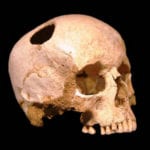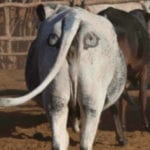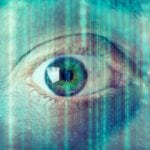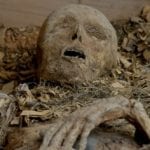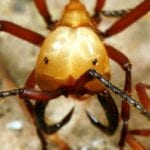 Music
Music  Music
Music  History
History 10 Less Than Jolly Events That Occurred on December 25
 Weird Stuff
Weird Stuff 10 Funny Ways That Researchers Overthink Christmas
 Politics
Politics 10 Political Scandals That Sent Crowds Into the Streets
 Weird Stuff
Weird Stuff Ten Bizarre Facts About The Doge Meme
 Our World
Our World 10 Ways Your Christmas Tree Is More Lit Than You Think
 Movies and TV
Movies and TV The 10 Coolest Stars to Set Sail on The Love Boat
 History
History 10 Things You Didn’t Know About the American National Anthem
 Technology
Technology Top 10 Everyday Tech Buzzwords That Hide a Darker Past
 Humans
Humans 10 Everyday Human Behaviors That Are Actually Survival Instincts
 Music
Music 10 Surprising Origin Stories of Your Favorite Holiday Songs
 History
History 10 Less Than Jolly Events That Occurred on December 25
 Weird Stuff
Weird Stuff 10 Funny Ways That Researchers Overthink Christmas
Who's Behind Listverse?

Jamie Frater
Head Editor
Jamie founded Listverse due to an insatiable desire to share fascinating, obscure, and bizarre facts. He has been a guest speaker on numerous national radio and television stations and is a five time published author.
More About Us Politics
Politics 10 Political Scandals That Sent Crowds Into the Streets
 Weird Stuff
Weird Stuff Ten Bizarre Facts About The Doge Meme
 Our World
Our World 10 Ways Your Christmas Tree Is More Lit Than You Think
 Movies and TV
Movies and TV The 10 Coolest Stars to Set Sail on The Love Boat
 History
History 10 Things You Didn’t Know About the American National Anthem
 Technology
Technology Top 10 Everyday Tech Buzzwords That Hide a Darker Past
 Humans
Humans 10 Everyday Human Behaviors That Are Actually Survival Instincts
10 Weird Wildlife Conservation Strategies That Actually Worked
The main problem conservation biologists deal with is population: there’s either too much of one species or not enough of another. Because of the diversity in the animal and plant kingdoms, much of conservation work is concerned with the most effective ways to kill “bad” species and encourage “good” ones to reproduce. Here are a few of the most interesting ideas that scientists have used to control the lives of other species.
10 Panda Boot Camp

Some captive panda breeding programs have ended in heartbreak, like when Xiang Xiang the captive-bred panda was killed just one year after being released into the wild. That’s where the idea of panda boot camp comes in. Tao Tao was a giant panda raised in Wolong Nature Preserve with the goal of preparing him to live in the wild.
In addition to his mother’s training in basic skills like climbing, scientists put Tao Tao through drills to prepare him for hazards like storms, mudslides, and predators. Most importantly, they only interacted with him wearing panda costumes and scents so he would not grow accustomed to humans. Tao Tao was released in 2012 and recaptured for a health checkup in 2017, where he was reported to be thriving in the wild. The Wolong panda survival school raises several panda cubs every year, putting them through strict drills to make sure they’ll be able to look after themselves in the wild.
9 Fish-Zapping Vaccuum Robots
From the makers of Roomba comes the Guardian, a friendly marine robot on a mission to zap as many lionfish as it can. The lionfish is a venomous species that has become a major threat in areas like the Bahamas where it consumes far more species than any local predator. No predators are interested in the lionfish due to its venom, but they can be eaten by humans when prepared correctly. The problem is that they’re hard to catch through traditional fishing methods.
That’s where the Guardian comes in. The current version of the Guardian can swim as low as 500 feet below the surface, where it stuns lionfish and sucks them into a holding tube so they can be brought back up. It still requires a remote control when launched into the ocean to ensure that it does not zap similar species by mistake, but future iterations will likely be able to pick out lionfish with Terminator-like accuracy.
8 Dugong Drone Surveillance

Dugongs are an eastern relative of the manatee whose habitat is important for the coastal ecosystem of the Indian and Western Pacific oceans. Since they’re very shy creatures, it’s been a real pickle for scientists to monitor this unique and threatened species using traditional methods. Until recently, the best option was an aerial survey with a seaplane, but those kinds of flights can be dangerous and costly, especially when you run out of gas hundreds of miles from the nearest inhabited island.
That’s why scientists turned to drones, developing a remote tracking method that’s a lot more environmentally friendly and accurate than using planes. Drones are launched from small boats and collect thousands of images in a flight, which are analyzed by a dugong-spotting algorithm that gets it right around 70% of the time. This allows researchers to put together population density maps for this vulnerable species in a few days, making it an incredibly useful and time-saving process. Probably a much better use of drone technology than whatever your weird neighbor is doing with them.
7 Undercover Crane

If you want to hang with cranes, you’ve got to look the part. That’s the idea behind breeding programs that raise whooping cranes with human surrogates in white robes and crane-shaped hand puppets. Whooping cranes raised by humans will often imprint on them, recognizing them as a caregiver. This can cause a serious identity crisis when the crane reaches mating age and sees humans as potential mates. The obvious solution is to fool the cranes into thinking that we too are cranes.
Whooping cranes are the tallest bird in North America, so it’s easy for them to see us as equals in terms of size. All you need to complete the costume is a head-to-toe white covering with a crane head puppet at the end of one arm. Human noises are limited around the cranes and calls are piped in to get the chicks used to the sound of their own kind. Conservation efforts like these have helped bring the whooping crane back from the brink of extinction. In the 1940s there were only 16 cranes left; that number is now over 800, most of them in the wild.
6 Robot Scarecrow Fish
Not every fish control project requires kidnapping invasive species in a vacuum robot. Sometimes all you need to do is spook them a little. This was the idea behind a silicone robot built by researchers at NYU to resemble and act like a large-mouthed bass. Its target is mosquitofish, a small species that was introduced into many freshwater environments to control mosquito populations but has now become an ecological threat.
Initial trials of this scarecrow bass showed it was capable of inducing stress in mosquitofish populations and even causing them to lose weight. Stress and weight loss lowers their chances of reproduction, which would help bring the population under control. The goal is to reduce mosquitofish populations without having to kill them, both due to humane concerns and because the species is so widespread it would be difficult to kill them in large quantities without affecting the broader ecosystem. The robot bass is still in prototype stages, but future iterations could be released into the wild to swim around spooking every mosquitofish they see.
5 Transcontinental Muskox Train
This one is a throwback from the early days of American wildlife conservation. Muskoxen were prevalent in parts of Alaska until the end of the 19th century, when a combination of over-hunting and climate conditions wiped out the last Alaskan herds. Something about that didn’t sit right with America’s legislators, because in the 1930s the U.S. Congress allocated funds for a reintroduction of muskoxen to Alaska. Thanks to this effort, today the state’s muskox population is over five thousand.
Here’s how they pulled that off: first, a group of Norwegian sailors captured 34 muskoxen from Greenland and hauled them back to Norway, where they boarded a steamship bound for New York City. There they spent a month in quarantine, safe but unable to enjoy any of the glitz and glamor of the Big Apple. The herd then boarded a train bound for Seattle and another steamship from there to Seward, Alaska. They took yet another train to Fairbanks, Alaska, where they received a five-year break before boarding another steamship that took them to Nunivak Island in the Bering Sea (and nearly sank along the way.) Remember that muskoxen are covered in two layers of shaggy wool designed to withstand Arctic winters, and now imagine how uncomfortable that 8,000-mile journey must have been. Still, most of the original herd survived and the population on Nunivak is now around 600. It also seeded several other herds on mainland Alaska which are thriving to this day.
4 Electroejaculation

Artificial insemination is common in agriculture and conservation, but some species don’t take too kindly to…let’s say, manual harvesting. Horses and some friendlier bulls can be persuaded to give up samples the old-fashioned way in a pinch, but what about when you need seed from something a little more aggressive, like a lion or a tiger? One of the solutions is electroejaculation, which is most used on livestock whose owners don’t feel like getting too up close and personal. Methods vary, but the basics involve inserting a rectal probe that oscillates between zero and maximum voltage, stimulating muscle contractions to induce ejaculation. Prototypes developed on domestic cats with plastic tubes and copper wires have been reformatted for bigger animals like Amur leopards and Siberian tigers. A recent success story from the Singapore Zoo produced a lion cub named Simba from electroejaculation of a geriatric lion whose name you should be able to guess. Simba was 20-year-old Mufasa’s first cub, and unfortunately also his last, as he did not survive the shocking procedure. Still a better way to go than getting trampled by wildebeests.
3 Bird Ejaculation Helmet
Sirocco the kakapo is a bird from New Zealand who likes people a little too much. The flightless nocturnal parrot comes from a species that almost went extinct but is coming back due to breeding efforts. Unfortunately for Sirocco, he grew up around humans and imprinted on his caretakers, causing him to have very little interest in mating with his own kind. He has tried to mate with humans, though, most notably in a 2009 viral video where he mounts zoologist Mark Cawardine and valiantly tries to make babies with the scientist’s skull.
His affection for human heads caused scientists to invent Sirocco an “ejaculation helmet,” a piece of rubber headwear covered in little dimples to collect semen. The problem is that kākāpō are long-winded lovers, often taking almost an hour to finish. No one quite had the stamina to let Sirocco spoon their skulls for that long, so the bird remained celibate. Despite the failure of the ejaculation helmet itself, the wacky story of Sirocco has brought global attention to the plight of his species, so we’re counting it as a conservation win anyway. The celebrity bird is now in his twenties and lives alone on an island, occasionally accepting visits from the heads of lovers past. The helmet is on display at the national Museum in Wellington.
2 Poison Toad Sausage

Cane toads are one of the most notorious invasive species in the world. Videos of motorists running over the venomous amphibians have brought attention to just how despised this species is in Australia. One of the biggest concerns is their effect on animals like the quoll, a small marsupial that preys on the cane toad but can be killed by the poison in its glands. Apparently cane toads are just too tasty to pass up, so scientists have developed a way to put quolls off the taste of toad meat. First, live toads are frozen to death, skinned, and ground into sausage, a process that is notoriously stinky. Then, the sausage-maker adds a chemical called Thibenzole that causes nausea in animals. Finally, the tainted toad sausages are dropped into quoll country by helicopter.Though initial results after the first drop in 2018 were questionable, the sausage strategy does seem to be making quolls turn away from cane toads.
1 Beaver Skydiving

After World War II, people started moving into the area of Payette Lake, Idaho, where local beavers had been squatting for centuries without a Mini-Mart in sight. After a while, the beavers started fighting back against human settlement and causing real damage to irrigation systems and orchards. It’s no shock that the people weren’t interested in moving away, so they had to figure out a way to move the beavers away. The mountainous terrain of Idaho made relocation by horse and truck costly and dangerous for the beavers, who cannot stand long periods of heat outside of water.
The solution came in the form of military planes and surplus parachutes. Through a series of trials, wildlife managers developed a box that was sturdy enough to hold a beaver and gently opened when it touched the ground. The first tests were done on an old beaver named Geronimo, who was dropped from a plane in a beaver box with a parachute over and over until the scientists were certain it was safe. Don’t feel bad for old Geronimo, though. He got priority registration on the first flight to the new territory, along with a harem of three females to keep him company. Seventy-six beavers in total were safely transplanted into the Idaho wilderness, with only one casualty whose box opened early and fell out.
